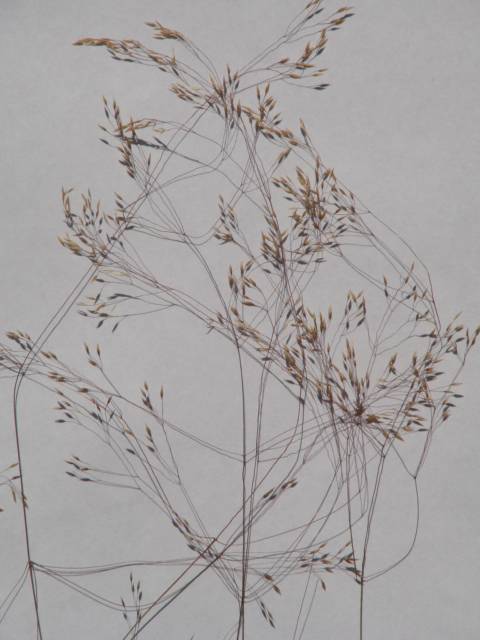Hosted by the University of Washington Herbarium, Burke Museum
Publication: Sp. Pl. 1(1): 370. 1797.
Origin: Native
Herbarium search: CPNWH
Notes: FNA24: "Agrostis scabra grows in a wide variety of habitats, including grasslands, meadows, shrublands, wood-lands, marshes, and stream and lake margins, as well as disturbed sites such as roadsides, ditches, and aban-doned pastures. It occurs throughout much of the Flora region, but is not common in the Canadian high arctic or the southeastern United States. It extends south into Mexico; it is also native to the Pacific coast from Kamchatka to Japan and Korea, and has been introduced elsewhere.
Plants in the Agrostis scabra aggregate are variable. Awned and unawned plants often occur together, the difference presumably being caused by a single gene. At least three groups may be distinguished within the species as treated here: widespread, lowland, rather weedy plants capable of producing very large panicles that have been introduced into the southern United States; smaller, short-leaved, slow-growing plants of rocks and screes, which are widespread in the Rockies, the Appalachians, and much of Alaska, Canada, and Greenland; and luxuriant, broad-leaved plants that are characteristically found in sheltered, frost-free canyons of the southwestern United States. The second group has sometimes been called A. scabra var. geminata (Trin.) Swallen or A. geminata Trin.
Tercek et al. (2003) found that annual forms of Agrostis scabra with inflated upper sheaths and open panicles that were collected around hot springs in western North America were molecularly, and in some respects morphologically, more similar to plants identified as hot spring endemics such as A. rossiae and A. pauzhetica Prob., than they were to neighboring perennial plants of A. scabra that did not have inflated leaf sheaths. They differed, however, in having open, rather than contracted, panicles.
Agrostis scabra is often confused w
Last updated 5/13/2023 by David Giblin.

